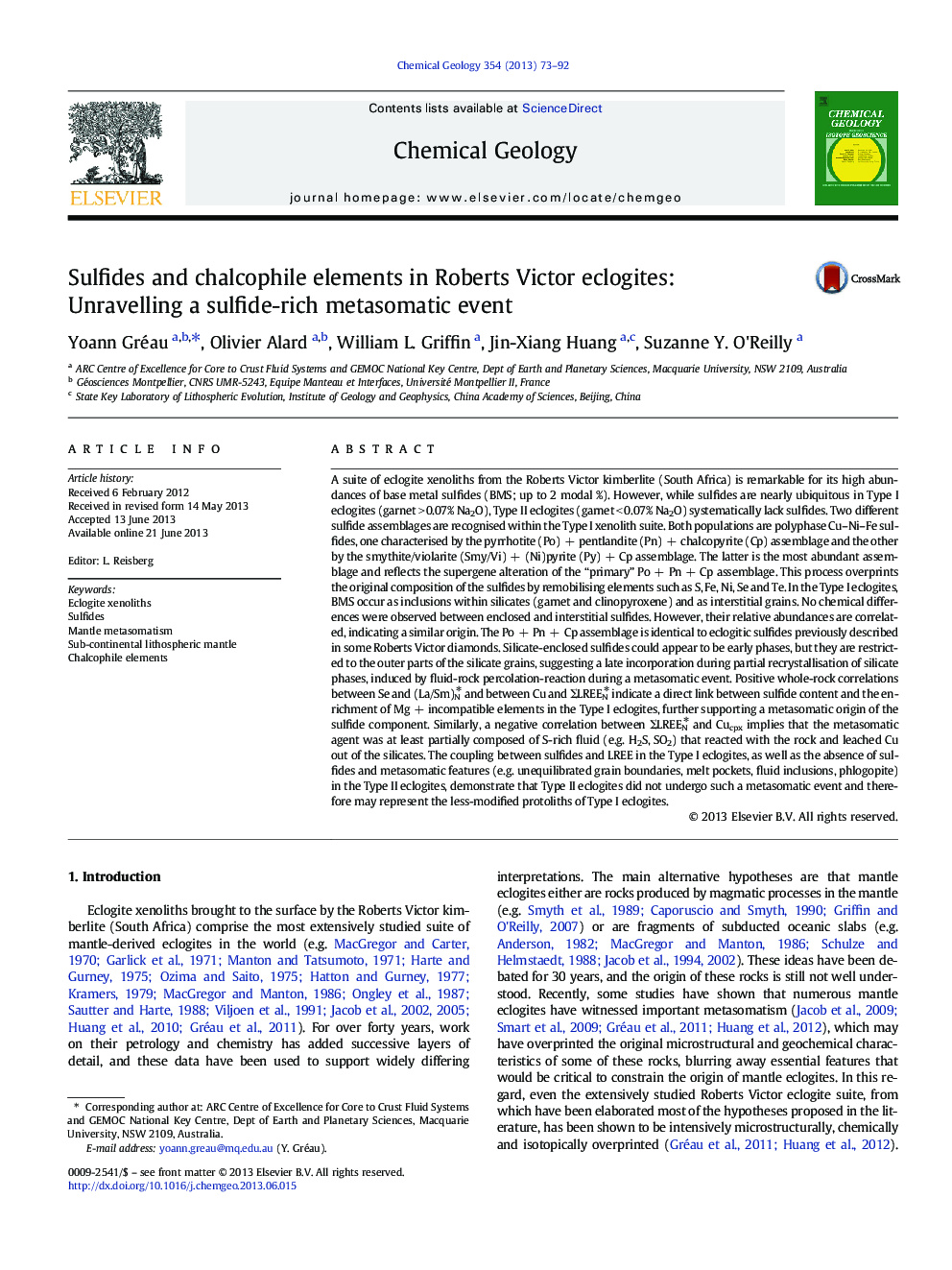| Article ID | Journal | Published Year | Pages | File Type |
|---|---|---|---|---|
| 6436835 | Chemical Geology | 2013 | 20 Pages |
â¢Type II eclogites do not contain sulfides.â¢Sulfides are ubiquitous and abundant in Type I eclogites.â¢Fresh sulfides consist of Po + Pn + Ccp, like eclogitic diamond inclusions.â¢Link between chalcophile and incompatible elements indicates a metasomatic origin.â¢Most sulfides were altered to smythite, violarite & pyrite by supergene processes.
A suite of eclogite xenoliths from the Roberts Victor kimberlite (South Africa) is remarkable for its high abundances of base metal sulfides (BMS; up to 2 modal %). However, while sulfides are nearly ubiquitous in Type I eclogites (garnet > 0.07% Na2O), Type II eclogites (garnet < 0.07% Na2O) systematically lack sulfides. Two different sulfide assemblages are recognised within the Type I xenolith suite. Both populations are polyphase Cu-Ni-Fe sulfides, one characterised by the pyrrhotite (Po) + pentlandite (Pn) + chalcopyrite (Cp) assemblage and the other by the smythite/violarite (Smy/Vi) + (Ni)pyrite (Py) + Cp assemblage. The latter is the most abundant assemblage and reflects the supergene alteration of the “primary” Po + Pn + Cp assemblage. This process overprints the original composition of the sulfides by remobilising elements such as S, Fe, Ni, Se and Te. In the Type I eclogites, BMS occur as inclusions within silicates (garnet and clinopyroxene) and as interstitial grains. No chemical differences were observed between enclosed and interstitial sulfides. However, their relative abundances are correlated, indicating a similar origin. The Po + Pn + Cp assemblage is identical to eclogitic sulfides previously described in some Roberts Victor diamonds. Silicate-enclosed sulfides could appear to be early phases, but they are restricted to the outer parts of the silicate grains, suggesting a late incorporation during partial recrystallisation of silicate phases, induced by fluid-rock percolation-reaction during a metasomatic event. Positive whole-rock correlations between Se and (La/Sm)Nâ and between Cu and ΣLREENâ indicate a direct link between sulfide content and the enrichment of Mg + incompatible elements in the Type I eclogites, further supporting a metasomatic origin of the sulfide component. Similarly, a negative correlation between ΣLREENâ and Cucpx implies that the metasomatic agent was at least partially composed of S-rich fluid (e.g. H2S, SO2) that reacted with the rock and leached Cu out of the silicates. The coupling between sulfides and LREE in the Type I eclogites, as well as the absence of sulfides and metasomatic features (e.g. unequilibrated grain boundaries, melt pockets, fluid inclusions, phlogopite) in the Type II eclogites, demonstrate that Type II eclogites did not undergo such a metasomatic event and therefore may represent the less-modified protoliths of Type I eclogites.
